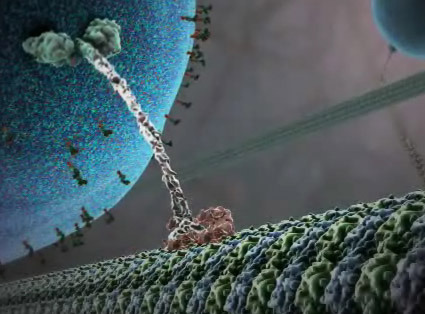Flying bears, flying cows, and occasionally, a bird will fly. This time-laps video is from the Reno Balloon race several years ago.
Flying bears, flying cows, and occasionally, a bird will fly. This time-laps video is from the Reno Balloon race several years ago.
This performance, “The Sultan’s Elephant” by Royal de Luxe is an amazing puppet show – if you could call a (30feet?) tall puppet that. Maneuvers are done via long ropes, cranks and tall cranes instead of nimble fingers and threads. However, don’t let that set-up fool you. The motions are totally natural, without the slightest hint of a mechanical nature.
This puppet show is the most realistic I’ve seen – the puppet itself is already a mastery of crafts. The eyes, eyelashes, the hair, etc. as she blinks, wonders, ponders; the expressions on the wooden puppet that seem to almost quietly whisper you a question. Eerily real, wonderfully superb.

All the city lights of Reykjavik will be turned off the 28th of September 2006 from 10:00 – 10:30 PM. A renowned astronomer will talk about the stars on national broadcast radio, everyone is invited.Lights off – Stars on is a grand scale happening that marks the opening of the Reykjavik International Film Festival. The City Council of Reykjavik and its neighboring municipalities have agreed to turn off all the city lights in the capital area for half an hour while a renowned astronomer talks about the stars and the constellations on national radio.
This is an idea by Andri Snær Magnason, an Icelandic writer of poetry, children’s books, plays and novels. Þorsteinn Sæmundsson PhD astronomer will talk about the stars.
What a romantic idea! I do hope it’d gently nudge people out of their routines and houses to lay out their deck chairs, pour some wine, and have a chilling good time while admiring the sky – something that perhaps have been overlooked or ignored in the hustle of daily lives – while listening to the astronomer (hopefully with a baritone, magnetic voice) talk about the constellations. It’d perhaps inject some sensitivity, perspective and gratitude to wind down and appreciate our nature and ourselves.
via AndriSnaer
After seeing the Hanging Cars post, a friend reminded me of a Honda advertisement (indeed, one of the greatest ever produced!). The components that made up a Honda lined up in an interesting array of domino effects – and apparently there were no visual tricks (like CG). The director was adamant that the whole thing be real, and they actually did the thing over and over again so that every part is perfect.
Another great, but perhaps a little less well-known Honda Ad, is the Choral Honda Ad for the launch of Honda Civic in the UK. The idea was to find out how driving a Honda sounds like – from the moment the engine is ignited, to how the windshield viper rubs against the glass; drops of rain hitting the car roof; autumn leaves crumpling as the wheel rolls over…etc. And then, to emulate this with the human voice through choir. Simply fascinating if you ask me.
The Honda Civic UK Choral Ad:
I assume many of you would have been forwarded clips like the one above – where elaborate and yet delightfully simple motions and mechanisms are activated as a ball (or something else) rolls along etc. This clip, however, is the grandma of all – a compilation of the best mechanisms, and it’s deliciously 12:54 long!
It was only recently, however, that I learned that these machines are known as “Rube Goldberg Machines“.
A Rube Goldberg machine or device is any exceedingly complex apparatus that performs a very simple task in a very indirect and convoluted way. Rube devised such pataphysical devices. A Rube Goldberg machine usually has at least ten steps. The best examples of his machines have an anticipation factor: the fact that something so wacky is happening can only be topped by it happening in a suspenseful manner.
While the namesake goes to an American, I’d venture that the masters of these crafts are the Japanese. The classic Honda ad (where the car parts form a Rube Goldberg sequence) was a popular example, as it wow-ed and charmed many.
But for me, the “ピタゴラスイッ” (Pitagora Suitchi, Pythagorean Device) series from Japan beats Honda hands down in the variety and imagination in the mechanisms involved. Pitagora Suichi is actually a Japanese educational TV program aimed at kids. In between segments, a small clip of an Rube Goldberg device is shown (Heh, these clips are the best parts of the show! A typical show is like this.)
What a great way to keep the child’s attention, while expanding their imagination! I’m sure I’d be sitting through the whole program just to make sure I catch all the fantastic sequences.
I’m sure many of us have twirled and spinned pens while trying to pass time in boring lessons and lectures, while arguing which pens are more suitable for spinning, the weight distribution etc. I say now, learn from the true masters!

It isn’t quite a sandcastle, but this gravity defying sand-sculpture is quite interesting. While I’d probably seem awkward to say this, but somehow it reminded me of a crowded morning peak hour on the local subway, with the crowd up the escalator and waiting at the platform.
Anyway.
sandcastlematt has explanations and other sand sculptures on how it’s made.

An amazing video, “The Inner Life of the Cell“, was produced for Harvard University’s Department of Molecular and Cellular Biology, that “takes undergrads beyond textbooks and vividly illustrates the mechanisms that allow a white blood cell to sense its surroundings and respond to an external stimulus”. In a dream-like, fantasy setting, this video really does make one marvel at beauty – not only of the beautifully-rendered video, but of the ingenuity of our very own biological system.
The press release.
What is it: a software that combs through pictures taken in the same place at different times, angles and positions, and construct/reposition them such that you can see in a virtual 3d environment. That was a mouthful that perhaps didn’t explain much – the video will make it clear.
A very powerful idea, indeed.

George Steinmetz took these photos of camels in 2005, and it was considered one of the best photos of that year. I took a glance at this and I went “Huh? Well this is kinda nice but, one of the best?”… until I realized that, hey, those black things are not camels.
They are actually the shadows. The camels are the little white lines. That is amazing.
[via Snopes]